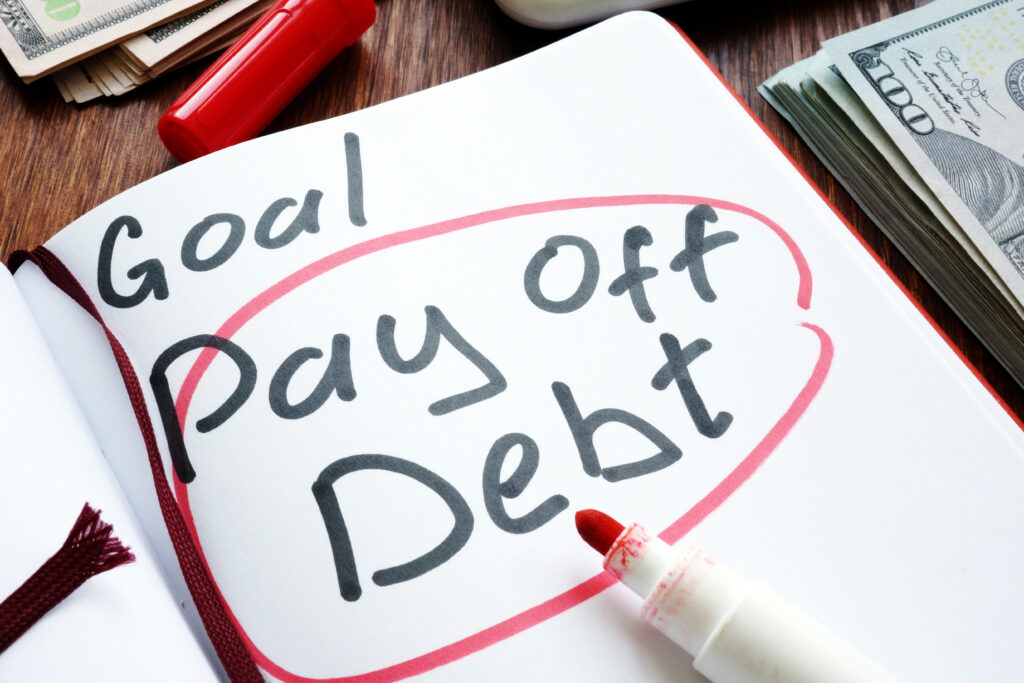You tried your best, but it’s happened: your debt has overwhelmed you. Making even minimum payments is a struggle. You certainly aren’t the only one with balances. As of the fourth quarter of 2024, U.S. residents had a record $1.21 trillion in credit card debt alone, according to the Federal Reserve Bank of New York.
When minimum payments aren’t cutting it and your balances continue to grow, it may be time to explore professional help. That’s where debt relief programs come in. These programs are designed to help you regain control of your finances by adjusting the amount you owe or changing the terms of your repayment.
But what exactly are debt relief programs, and how do they work? Let’s break down the different options so you can find the one that best fits your situation.
Debt Relief Program Types
What are debt relief programs? As a financial strategy, debt relief is an umbrella term for a range of solutions that either change the amount or terms of your debt to help you pay it off.
Generally, debt relief is most suitable for people who can no longer manage their debt payments. Typically, these individuals have difficulty making minimum payments on their credit cards or loans, and their balances continue to grow.
What Are the Types of Debt Relief Programs?
The primary types of debt relief programs include debt consolidation, credit counseling, debt management plans, and debt settlement, as well as bankruptcy.
Debt Consolidation
With this solution, you combine multiple debts into a single loan or line of credit. The goal is to get a lower interest rate and monthly payment, allowing you to pay off your balances quicker and more efficiently.
You can use different types of loans for debt consolidation, such as a personal loan or home equity loan. You can also consolidate using revolving credit, such as a balance transfer credit card — but unlike installment loans, these options require strong credit and careful repayment to avoid new debt accumulation. For whichever solution you choose, make sure you factor in terms and fees.
Debt Management Plans
This type of program can help you repay your debt. It typically involves working with a certified credit counselor to establish what’s called a debt management plan (DMP). With a DMP, you can pay off your debt more efficiently, and potentially with a lower rate or monthly payment.
Credit Counseling
Offered by nonprofit agencies, credit counselors seek to provide guidance on consumer credit, budgeting, and debt management. They also often offer workshops and educational materials.
Your counselor will assess your debts, budget, and credit history, which may result in them recommending that they work with you to create a debt management program. Note that while credit counseling offers financial guidance, while debt management plans (DMPs) are specific structured programs negotiated by the counselor to help you systematically repay your debts.
Debt Settlement
With this type of debt relief, the goal is to change the amount of your unsecured debt to help you repay it quicker and become debt-free. Generally, debt settlement calls for you to pay a company to negotiate with your creditors to settle your debts for less than your original balance. Creditors sometimes agree to settlements since they prefer to get something rather than nothing.
Many debt settlement programs ask that you stop paying your creditors and instead deposit funds into a dedicated account that you control, typically at an FDIC-insured institution. Once you’ve accumulated sufficient funds, the company will seek to negotiate on your behalf.
Bankruptcy
Bankruptcy is typically considered a last resort. Through this legal process, you can manage or erase debt through debt elimination, restructuring, or repayment plans. With Chapter 13, a debt restructuring plan is created that allows you to repay creditors over a specific period. If you file Chapter 7, you’re petitioning the court to liquidate your assets to pay as much as possible to your creditors.
The process is overseen by a trustee who makes sure creditors are treated fairly and that you adhere to the bankruptcy code. Note that not all debts can be discharged in bankruptcy. For example, most student loans, alimony, child support, and certain tax debts typically survive bankruptcy, although there are exceptions.
In Summary
Are debt relief programs good? They certainly can be. There are several forms of debt relief, each of which seeks to alter the terms or amount of your obligation to help you pay it off. Carefully consider your options and make the right choice for you.
The content provided is intended for informational purposes only. Estimates or statements contained within may be based on prior results or from third parties. The views expressed in these materials are those of the author and may not reflect the view of SmartSpending. We make no guarantees that the information contained on this site will be accurate or applicable and results may vary depending on individual situations. Contact a financial and/or tax professional regarding your specific financial and tax situation. Please visit our terms of service for full terms governing the use this site.

